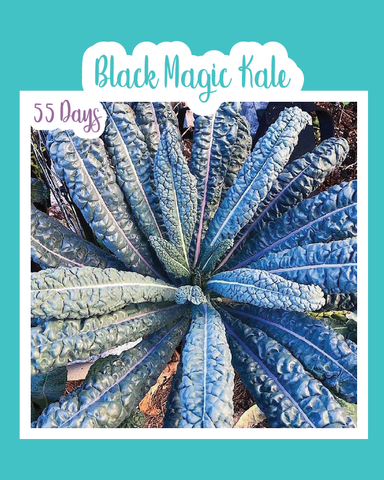
Premier Kale
Seed Count: Approx. 200 seeds
Days to Maturity: 55-65 Days
Description: Premier kale, also known as Early Hanover, is an upright, high yielding variety great for small space gardens, and growing in containers! The plant remains compact, while growing in new spots on the main stem, increasing its leaf productivity. The smooth, medium green leaves are delicious and nutritious, growing up to a foot long. Its baby leaves are great in salads and on sandwiches, while mature leaves are delicious cooked, juiced, or added to smoothies. This kale is a very popular variety, with home and market growers, for its great flavor, good looks, and richness in antioxidants and beta carotene! Premier Kale overwinters well, and resists bolting 3-4 weeks longer than other varieties too! I'll be testing this variety out this spring against my tried and true Black Magic Kale to see which variety held out longer against pests and heat.
How To Grow
Sowing: Since kale thrives in cool weather and sweetens with frost, it grows best as a fall crop. Plant 3 seeds in a cluster, 1/2" deep and 16-18" apart in rows 2-3' apart about 3 months before first expected frost. Thin to the strongest plant when the seedlings emerge. Kale appreciates very rich, moist soil that drains well, since they taste best when allowed to grow quickly.
Growing: Keep weeds controlled and conserve moisture by applying mulch. Keep the soil evenly moist, but stop watering after the first frost. Kale is very easy to grow, but can be bothered by cabbage aphids.
Harvesting: Harvest baby leaves as soon as they grow big enough for salad; harvest bigger leaves as needed. Use a scissors or a knife to cut the leaves, to avoid tearing the stems. To harvest the entire plant, cut it off an inch above ground level. To make the fresh leaves last longer in the fridge, dip the stems in water after cutting them; they should stay fresh for up to a month. Kale also freezes well. Expect to harvest well after frost, since most varieties of kale can survive freezing temperatures. Kale must overwinter before producing seeds; since it survives cold well, a thick layer of mulch should protect it sufficiently, even in colder climates. In the spring, allow it to flower and go to seed. Some of the leaves can still be harvested for eating without damaging the seed development. The tall stalk will develop pods that ripen from the bottom up; wait until the pods turn light brown before harvesting them.




